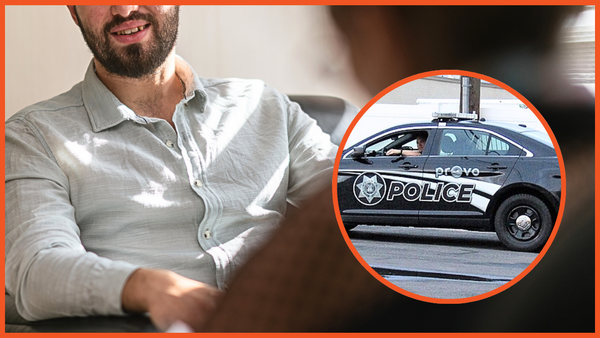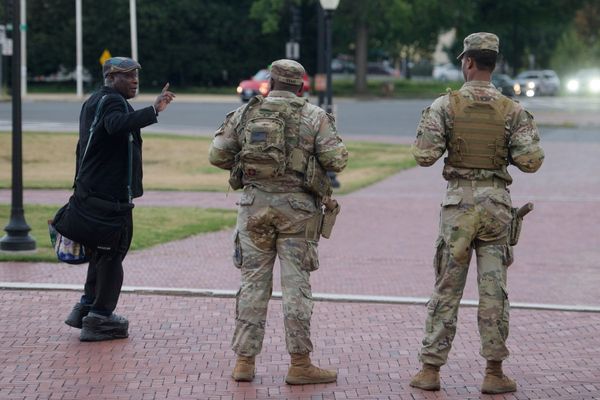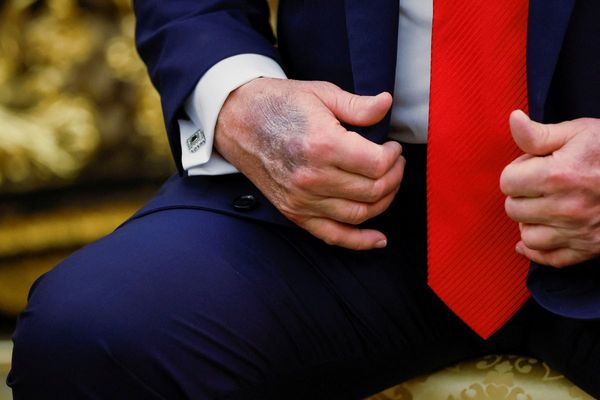
After the coronavirus pandemic reached national emergency status in March, former Olympic gymnast Chellsie Memmel’s family gym closed its doors. Seeing M&M Gymnastics empty – no aspiring athletes launching themselves into the foam pit, or wobbling on top of the beam – felt wrong to Memmel. “I was like, it’s a gymnastics building,” she says. “It needs gymnastics.”
So Memmel decided to fill the void herself. While helping her parents, Andy and Jeanelle, clean the Wisconsin gym ahead of its eventual reopening, she began to revisit some of the skills that once made her the best in the world. At 17, she won the women’s all-around title at the 2005 World Championships; three years later, she helped the US women’s gymnastics team win silver at the Beijing Olympics. But she turned to coaching and judging after an unsuccessful attempt to make it to the 2012 London Games, and hadn’t trained consistently since.
And yet Memmel’s skills weren’t hard to recover. “Your body’s like, oh yeah, I know this!” she says. After experimenting in the empty gym, she began a tentative return to training with father Andy, her former coach. It was terrifying, at times: “I was truly nervous for some of the tumbling, or for doing the beam dismounts,” she recalls. But she persisted, with gentle persuasion from Andy when she faltered. A month before she turned 32, Memmel debuted a challenging floor skill she’d never managed as a teenager: the tuck double double, in which she performs two twists and two somersaults in mid-air. “Being able to do that for the first time in my 30s blows my mind,” she says.
Memmel documented her training process on YouTube, calling it “Chellsie’s Adult Gymnastics Journey.” Despite feverish online speculation, she refused to call it a comeback – not until 31 July, when she uploaded a new video. “It’s official,” she says in the clip, raising her arms in the air. “I’m coming back.”
Modern elite gymnasts are typically forced to surrender their hard-won careers when they’re in their teens, or barely out of them. Carly Patterson retired at 18. Kyla Ross and Jordyn Wieber were done at 19. McKayla Maroney and Shawn Johnson bowed out a few months after their 20th birthdays. Simone Biles, still dominating the sport at 23, is a rare exception to the rule and is considered old for a gymnast.
In an August YouTube video, Memmel trains in the leotard she wore to her first World Championships in 2003, flipping on the beam in front of an audience of aspiring gymnasts. “That leotard is older than every one of you,” Andy Memmel tells them.
Gymnastics is a physically destructive sport, hence the short shelf-life of even its biggest stars. Kate Richardson, a gymnast turned physiotherapist who represented Canada twice at the Olympics, explains, “There is only so much the average gymnast’s body can tolerate, so it begins to break down with time; typically, either injury or a declining ability to perform at the required level leads to retirement.” Athletes can sustain a wide range of injuries, with the spine, wrists, and ankles most susceptible. “The landing of a tumbling pass, for example, puts forces many, many times the athlete’s body weight through the lower body and spine,” Richardson says. The sport also “demands extreme mobility from the hips, shoulders and spine,” meaning joint instability issues are common.
Indeed, Memmel’s career decline was precipitated by a shoulder injury in 2011, which demanded two consecutive surgeries. Though she hoped to compete for a spot on the 2012 Olympics team, she didn’t qualify for that year’s national championships, and in November 2012, she announced her retirement. The unhappy end to her competitive career devastated Memmel, and she struggled to adjust to her post-gymnastics life. “All of your time, all of your focus in going into it, and then it’s done,” she says. “I went from spending four to seven hours in the gym every day to thinking, ‘What am I going to do with that time? Do I know who I am outside of this sport?’”
Still, she didn’t consider changing careers altogether, instead coaching students at her parents’ gym and judging at national competitions (Biles is her favorite to watch, she says: “She just does crazy things.”) “There was never really a point when I didn’t want to be around gymnastics. It was just trying to find my place,” she reflects. “It’s funny that I’ve found my way back to it again.”
Memmel’s life as a newly-unretired gymnast looks very different to the height of her career. As a teenager, her daily routine revolved entirely around gymnastics – in the gym by 8am, then dance classes, and conditioning, and time on the treadmill, with any spare hours reserved for eating and sleeping. Now, she gets up to prepare breakfast for her two young children, aged two and five, spending her free time swimming in a nearby lake or working on the house she’s building with her husband. She only trains on Mondays, Wednesdays, and Fridays, and plans to keep it that way for the near future. “Gymnastics is a smaller part of my life,” she says. “It’s not all consuming anymore.”

She trains with a new caution, too: Her old shoulder injury still looms large in her mind, so she’s hesitant to work too hard on bars, once her strongest event. And she tries to keep the number of times she practices a skill low, relying on the muscle memory she developed as a teenager. “There’s always a risk. You never know what’s going to happen,” she says. “But there would definitely, definitely be way more of a risk if I trained as hard as I did when I was 15. If we train smart, keeping the numbers low but making those numbers count, I think it drives that risk down a little bit more.”
According to Richardson, Memmel’s focus on quality over repetition is crucial. “As we age, the cushioning in joints that withstand a lot of loading, like the knees and the spine, slowly becomes firmer and becomes less able to absorb load. Our soft tissue also becomes less elastic,” she says. “Good technique and mechanics become more and more crucial as gymnasts age, as their bodies are more susceptible to the repetitive strain of repeatedly poor mechanics.”
Most of the time, Memmel is grateful for her body, for the gravity-defying moments it grants her at 32 just like it did at 17. But gymnastics complicated her body image as a teenager, and age hasn’t quieted those old insecurities. “I’m still working on being super confident and loving myself and my body,” she says. “My husband is super helpful, but he does get annoyed with me sometimes – like, ‘Look at how strong you are! Look at what you’re doing!’ It’s still hard to say those words to myself.”
For now, Memmel’s keeping her competitive ambitions modest. “I want to just see where it takes me,” she says. “I want to figure out: What routine is realistic and could give you a shot at competing well?” As for a chance at the Tokyo Olympics, she acknowledges her chances are slim, though she won’t rule anything out – for one, she’ll be 33 in 2021, while the average age of the gold medal-winning team in Rio was 19. “I’m just going to enjoy this,” she says. “That’s why I started doing it again, because I love doing it and I enjoy it so much.”
She would, however, like to have a second skill named after her; to do so, she needs to be the first to successfully perform it at an Olympics or World Championships. She debuted the Memmel turn, in which she spins 720 degrees on one leg with the other in a vertical split, at her first Worlds in 2003. Almost 20 years later, Memmel hopes to add her name to a new type of piked Arabian. The skill involves entering backwards into an aerial half-twist, before transitioning into a straight-legged somersault. It’s typically reserved for floor routines – but Memmel hopes to perform it on beam. “It’s difficult, but I’ve been working on it every day,” she says.
Tried the pike arabian 😍#ilovegymnastics #gymnastics #adultgymnastics pic.twitter.com/oeEjDvWseP
— Chellsie Memmel (@CMemmel) August 29, 2019
A second eponymous skill would delight Memmel’s fanbase. Online, whether on YouTube or Instagram or Reddit, they eagerly track her progress, imagining where she’d fit into an Olympic lineup or meticulously calculating the scores her routines could earn. Other fans know little about gymnastics, but take inspiration from her comeback all the same. “So this week was the first week I went back to rugby practice. I’m almost 30, haven’t played in 7 years and am completely out of shape, but I missed it,” a follower commented on a recent Instagram post. “Watching your journey has definitely helped encourage me to go back.”
“I wasn’t expecting the overwhelmingly positive reactions,” Memmel says. “I’m really truly just grasping how many people this resonates with.”
Memmel would like to inspire more women, especially parents, to “do something for themselves,” perhaps by resuming an old sport they gave up. She’d like the gymnastics community to acknowledge that “a break isn’t the end of the world,” and “figure out a better balance” that doesn’t see gymnasts’ bodies broken down by 20. And whether she gets the piked Arabian on beam named after her, or makes it back to Worlds or even the Olympics, she doesn’t expect medals to be her comeback legacy. What she’d like to accomplish most? “A shift in attitude, showing people that we can do this, even when we’re older,” she says. “It just might look a little different.”







